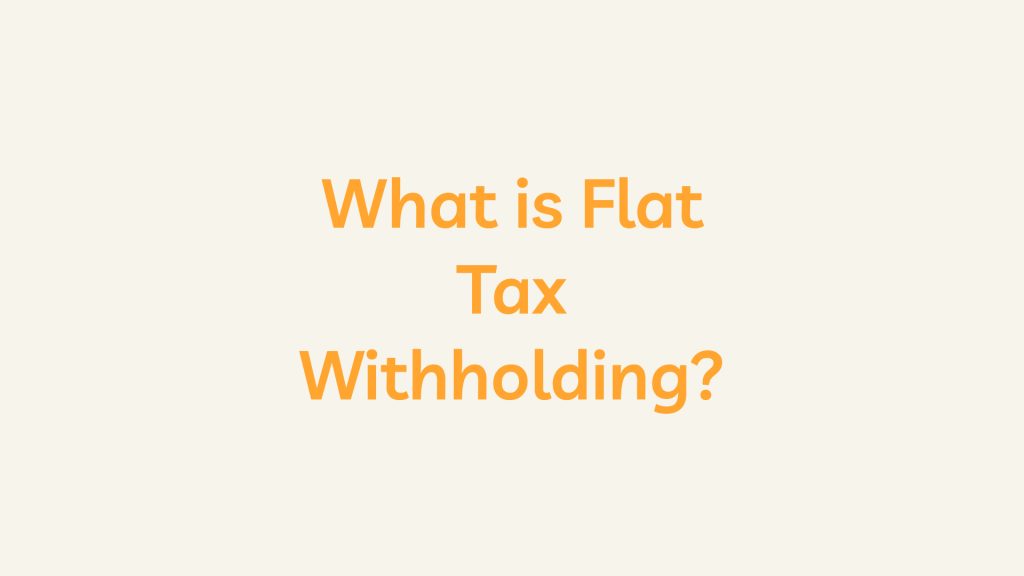Introduction
Taxation is a fundamental component of any economic system, playing a crucial role in funding public services and shaping income distribution. Among the various tax models, the concept of Flat Tax Withholding has gained attention for its simplicity and transparency. In this system, all individuals contribute a fixed percentage of their earnings regardless of income level. While proponents emphasize the ease of administration and the potential for stimulating economic growth, critics raise concerns about its regressive nature, potentially burdening lower-income individuals disproportionately.
This article explores the nuances of Flat Tax Withholding, examining its global implementations, economic implications, and the ongoing debate surrounding its fairness. From the Baltic states’ experiences to broader perspectives on the global stage, we delve into this tax system’s dynamics, considering its advantages and critiques. Additionally, we explore how some nations have adjusted their flat tax models in response to concerns about income inequality, shedding light on the complexities of tax policy decisions. As countries continue to shape their tax structures to meet economic and societal needs, understanding the intricacies of Flat Tax Withholding becomes essential for policymakers, economists, and the general public alike.
1. Flat Rate Taxation
In a flat tax withholding system, everyone pays the same percentage of their income in taxes, regardless of how much they earn. This simplicity is often seen as an advantage because it is easy to understand and administer.
2. Simplicity and Transparency of Flat Tax Withholding
One of the primary advantages of flat tax withholding is its simplicity. Both taxpayers and tax authorities find it easier to calculate and collect taxes when a single flat rate is applied to all income levels. This transparency can reduce the administrative burden and simplify the tax system.
3. Potential for Economic Growth
Advocates of flat tax systems argue that they can stimulate economic growth by giving individuals and businesses more certainty about their tax liabilities. The straightforward nature of flat taxes may encourage investment and entrepreneurship.
4. Flat Tax Withholding Critiques and Equity Concerns
However, critics argue that flat tax systems can be regressive, disproportionately affecting lower-income individuals. Since everyone pays the same percentage, lower-income people may find the tax burden more significant than their wealthier counterparts.
5. Implementation Worldwide
Several countries around the world have experimented with or adopted flat tax systems. Examples include Estonia, Latvia, and Lithuania. However, the specific rates and thresholds can vary widely.
6. Flat Tax Withholding Adjustments and Exceptions
Sometimes, flat tax systems include adjustments or exceptions to address equity concerns. This might involve exemptions for certain types of income or including progressive elements to ensure that lower-income individuals are not unduly burdened.
7. Political and Economic Considerations
Political and economic considerations often influence the adoption of a flat tax system. Policymakers weigh the potential benefits of simplicity and economic growth against fairness and income inequality concerns.
8. Flat Tax Withholding Global Perspectives
Beyond the Baltic states, other countries have also explored flat tax systems, albeit with variations. For instance, Russia introduced a flat income tax rate in the early 2000s, while Hong Kong operates a flat tax system with a low and capped tax rate.
9. Dynamic Effects on Compliance
Proponents argue that flat tax systems can increase compliance as individuals and businesses may find adhering to a uniform tax rate more straightforward. This can potentially reduce tax evasion and improve overall revenue collection.
10. Criticism and Policy Adjustments
Over time, countries implementing flat tax systems have faced criticism and sometimes made adjustments. Some have introduced progressive elements or revised rates to address the concerns of those who argue that flat taxes disproportionately benefit the wealthy.
Conclusion
Flat tax withholding represents a departure from the progressive tax systems that dominate many economies. While it offers simplicity and transparency, concerns about equity and fairness remain central to the ongoing debate surrounding tax policy. As countries continue to evaluate and adjust their tax systems, the discussion about the merits and drawbacks of flat tax withholding will likely persist. The global diversity in implementing flat tax systems further illustrates the ongoing exploration of alternative tax structures and their impact on economic dynamics.
